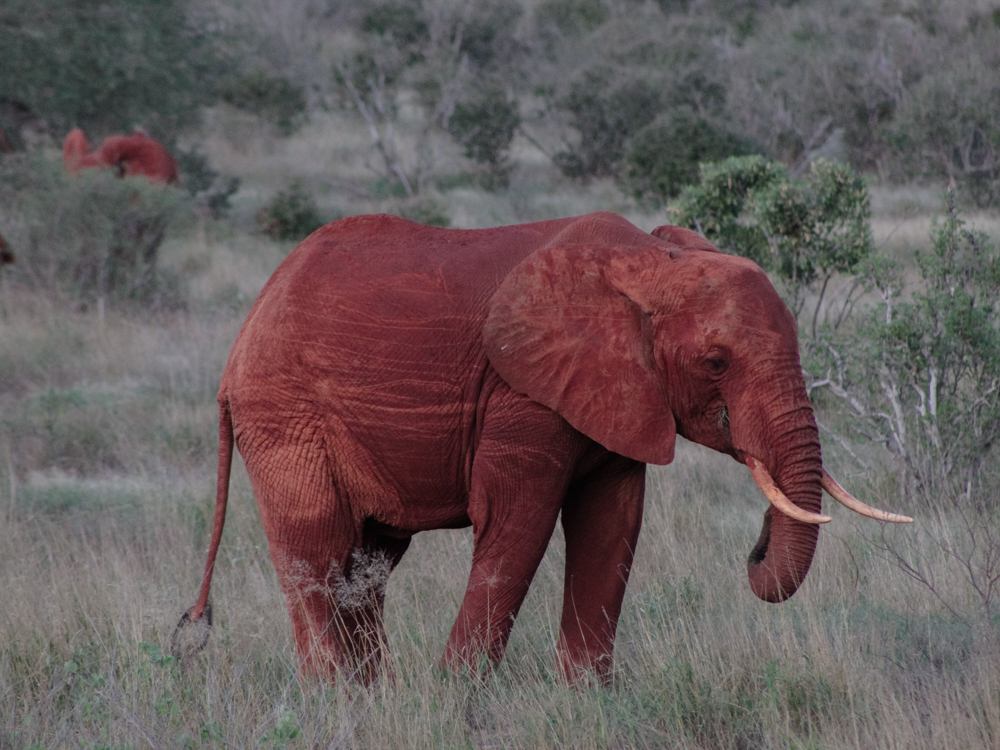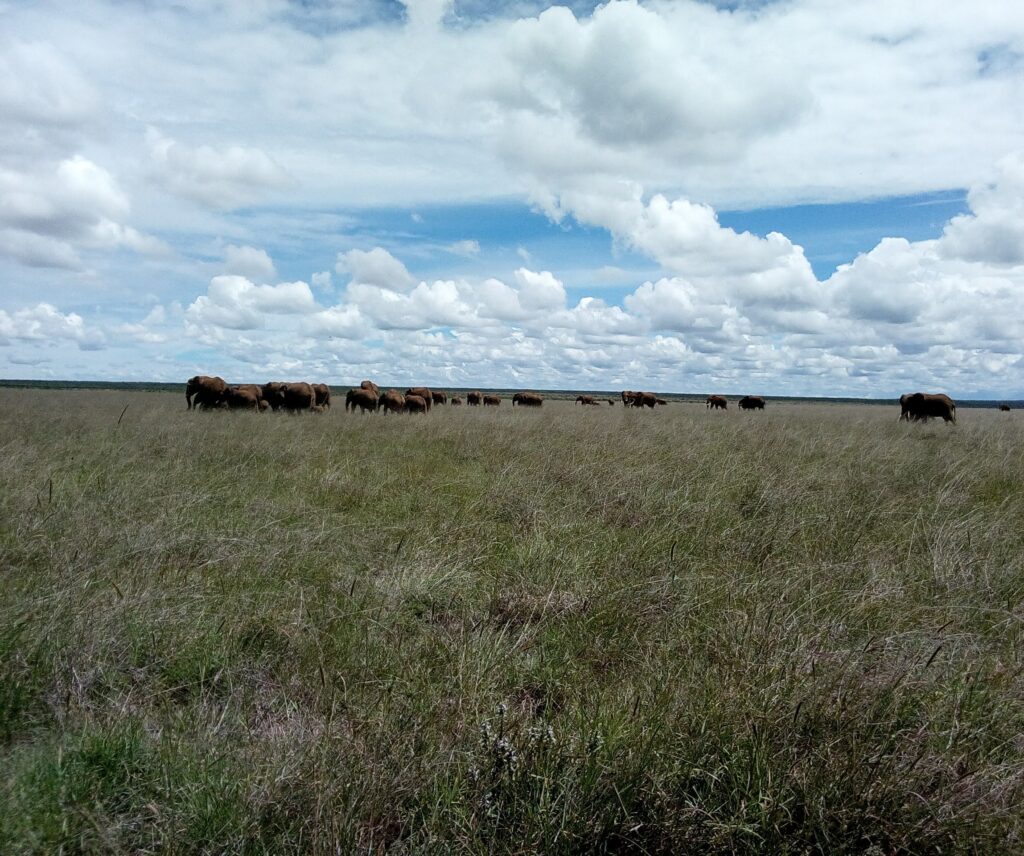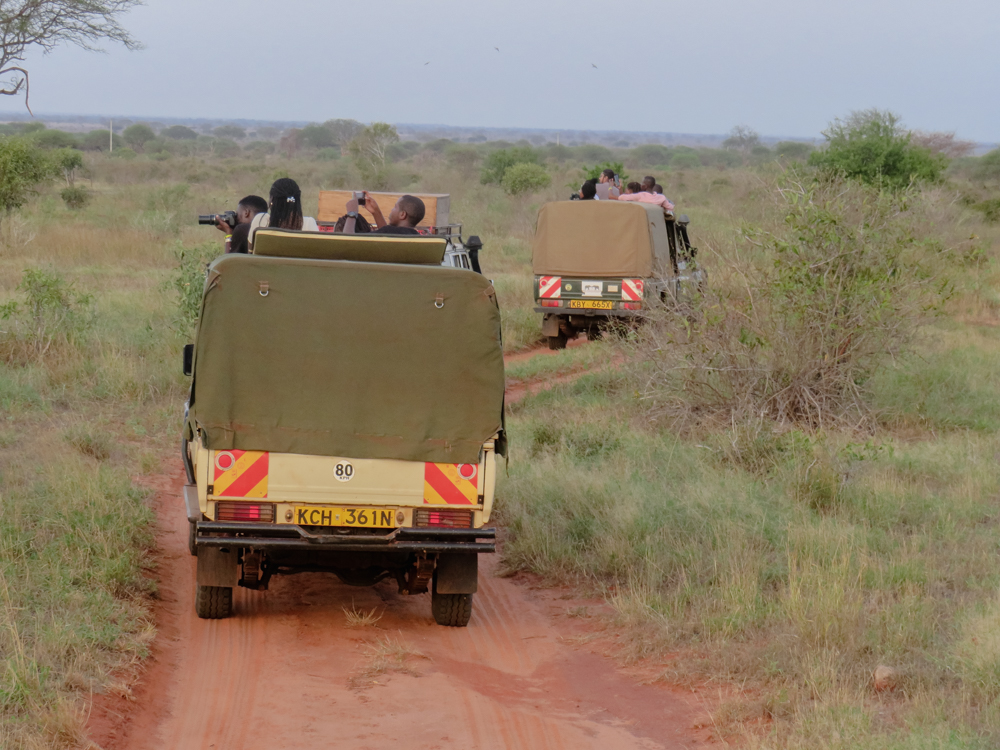Contact : +254 725 877 146
Celebrating Giants, Advocating Survival: World Elephant Day
My journey with elephants began in 2016 during a school ecological trip to Amboseli National Park as a wildlife student at the University of Nairobi. Standing in the presence of these gentle giants ignited a lifelong passion within me. Two years later, in 2018, I had the privilege of working closely with elephants at the Loisaba Conservancy alongside the Kenya Institute of Primate Research, which deepened my understanding and respect for their intricate behaviors.

But it was in April 2022 that my connection to elephants truly transformed during Save The Elephants’ career development program in Tsavo. Our Land Cruiser stirred up dust as a family of Tsavo’s legendary red elephants emerged just 20 meters away. Their wrinkled hides, stained a rich mahogany from rolling in the mineral-rich soil, radiated with the warm hues of dusk. This remarkable red hue, unique to Tsavo’s elephants, is a striking testament to their adaptation and survival in this rugged environment.
Watching playful calves under the protective eyes of their mothers and hearing the deep, low-frequency rumbles that echoed through the air was a moment of pure joy and profound connection—marking the happiest day of my conservation career. Yet, beneath this awe-inspiring beauty lies a sobering reality: these magnificent creatures are fighting for their survival.
Every year, on August 12th, the world comes together to celebrate World Elephant Day—a day to honor these majestic giants that have roamed our planet for millennia. Elephants are not only symbols of wisdom and grace but also crucial architects of their ecosystems. From the golden savannas of Africa to the misty forests of Asia, they face a relentless battle against poaching, habitat destruction, and human-wildlife conflict.
World Elephant Day was established in 2012 by Canadian filmmaker Patricia Sims and Thailand’s Elephant Reintroduction Foundation. It emerged from a desperate need to raise global awareness about the elephants’ plight and to inspire action before it is too late. Nearly a decade on, progress has been made, from ivory trade bans to expanding sanctuaries—but grave challenges persist: approximately 100 elephants are still poached daily for their tusks, and their habitats continue to disappear at alarming rates.
Today, World Elephant Day is not just a celebration; it is a call to action. The tenacity of elephants is more than a conservation issue—it is a moral imperative. If elephants fall silent, the world will echo with their absence.

Kenya’s Ecological Architects
Globally, three elephant species remain:
African Savanna Elephant (Loxodonta africana): Kenya’s iconic giants with ears shaped like the African continent.
African Forest Elephant (Loxodonta cyclotis): Smaller elephants with straighter tusks, found in the Congo Basin , Kenya and other African countries.
Asian Elephant (Elephas maximus): Endangered, recognizable by their twin-domed heads.
Kenya’s savanna elephants are emotional and intelligent beings. They mourn their dead, visit gravesites years later, babysit calves communally, and communicate through seismic vibrations.
Despite their incredible nature, African elephants are classified as Vulnerable, while Asian elephants are Endangered. Why?
The War on Two Fronts:
- Poaching: Despite the 1989 international ivory ban, an elephant is killed every 25 minutes for its tusks. Kenya lost 80% of its elephants between 1970 and 1989.
The Silent Crisis: Human-Wildlife Conflict
- Kenya’s growing population leads to elephants losing roughly 50 football fields of habitat daily.
- Consequences include over 500 violent clashes annually, rapid destruction of crops, and retaliatory killings by spear or poison.
Kenyan Solutions Leading the World
- Beehive Fences (Tsavo & Laikipia): Elephants fear bees, so farmers protect their crops using buzzing beehives while also earning honey income.
- Elephant SMS Alerts (Mara & Amboseli): GPS-collared elephants trigger text message alerts to nearby villages through Save The Elephants’ innovative technology, helping prevent conflict.
- Wildlife Corridors: Protected pathways allow elephants to safely migrate between Kenya and Tanzania.
- Compensation Schemes (Kenya Wildlife Service): Quick payouts for crop damage reduce retaliatory killings.
Why You Should Care
Elephants are Kenya’s living ecosystem engineers:
- They create waterholes used by all wildlife during droughts.
- They disperse seeds in their dung—some plants only germinate after passing through an elephant.
- They drive tourism, contributing approximately 12% of Kenya’s GDP.
Culturally, elephants hold sacred status:
- The Luo people call them “Nyamgondho,” meaning “wise ones.”
- The Maasai regard elephants as Earth’s ancient guardians.
Your Elephant Action Plan This #WorldElephantDay
- Visit Responsibly: Support community conservancies such as Sera Samburu and Ol Pejeta. Avoid camps offering elephant rides.
- Report Crimes: Contact Kenya Wildlife Service hotline at 0800 597 000 to report poaching or human-elephant conflicts.
- Educate Others: Share powerful facts like how a single live elephant generates $1.6 million in tourism revenue compared to $21,000 from ivory.
- Advocate: Call on local leaders to strengthen habitat protections and invest in elephant conservation.
Final Trumpet Call
Kenya’s elephant population has doubled since 1989—a testament to what focused conservation can achieve. As Dr. Paula Kahumbu eloquently states:
“When we protect elephants, we protect the very fabric of our wilderness.”
Let us honor these giants with more than celebration—through committed action to ensure their survival for generations to come.

